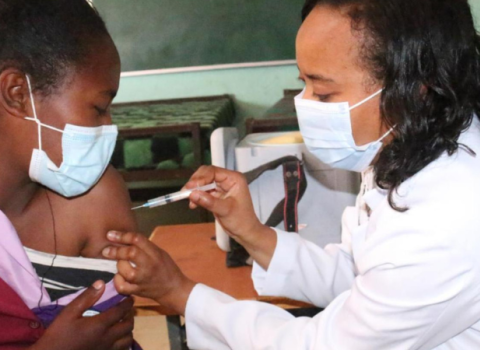
Dr Binah Baum, CEO of TMI Technology Maturation & Incubation
Within the European life sciences industry, biopharmaceutical start-up companies have by far outpaced their medical technology (medtech) counterparts, providing the most notable success stories and attracting most of the investment and attention. This has relegated medtech to a less glamorous existence, in the shadows of biotech.

Dan Gelvan, managing director of Medical Dimensions Ltd
But in the global economic crisis, many European life science investors are turning their attention to medtech, which is perceived as a safe harbour in these risk-averse times. For many venture capitalists, the medtech sector represents a much more manageable risk profile: development costs are significantly lower, the regulatory pathway is shorter, the time to market is faster and the success rate is higher.
Investing in medical innovation that prioritises projects with a manageable risk profile has been the standard approach in Israel for almost two decades, underpinning the development of Israel’s successful – medtech dominated – life sciences industry.
Israel’s life sciences industry
Israel has seven major universities with a proportion of university graduates equal to that of any leading country in Europe. Much of this intellectual energy is channelled into entrepreneurship – as evidenced by an ever increasing number of patent applications, the existence of 23 technology incubators, and by over one thousand life sciences companies, 350 of which were established within the past five years.
Medtech companies make up over 55 per cent of the total, and over 30 per cent of Israeli life sciences companies are revenue-generating. In 2008, VC funds invested more than €300 million, with 60 per cent coming from foreign investors.
In all, 55 mergers and acquisitions and initial public offerings were completed between 2005 and 2008, bringing in an additional €500-750 million annually.
The sector traces its roots to the late 1970s and early 1980s, but the turning point came in 1991 when immigration from the former Soviet Union brought a large number of highly qualified, skilled and creative professionals to the country. In response, Anatoly Sharansky, then Minister of Trade & Industry, established the Israeli Technological Incubator Programme to support technological initiatives through to proof-of-concept.
At the time, total funding provided to new projects by the Office of the Chief Scientist of the Ministry of Trade & Industry amounted to 85 per cent of an overall budget of €250,000, for a two-year incubation. Company ownership was shared between the entrepreneur, the incubator, and the investor of the complementary 15 per cent of the budget.
At around the same time a further government funding vehicle was created, providing entrepreneurs with initial basic support of up to €20,000, mainly to assist them with patent applications, writing a business plan, and so on.
Realising the importance of follow-on funding for start-up companies after proof of concept was achieved, the Israeli government laid the foundation for the country’s venture capital industry, setting up the €70 million Yozma (Initiative) fund, structured as a 40 per cent participation in 10 funds, each one managing €15-20 million.
Nine of these early VC funds continued to raise additional investments, creating the present-day core of the Israeli VC industry. The largest among them have managed more than €1 billion over the years.
In retrospect, it may seem obvious that despite the absence of a declared intent, the structure of the support programmes and the terms of the early venture capital funds created a strong preference for the medtech sector over biopharmaceuticals.
Although life sciences companies accounted for only a small percentage of the overall high tech scene at the time, the 1990s witnessed some notable successes, practically all in medtech. These included ESC (now Lumenis), which went public on Nasdaq in 1996, and reached a peak value of over $1 billion, BioSense, acquired by Johnson & Johnson in 1996 for $550 million, and Medinol, which entered into a strategic partnership with Boston Scientific, becoming the sole supplier of all Boston Scientific’s coronary stents.
By the end of the 1990s, Israel had the third-largest medtech cluster in the world, after Silicon Valley and the Boston Area, and closely followed by Atlanta.
Adding complexity
Over the years the scene has changed significantly, with the business environment becoming increasingly complex and demanding. Whereas during the 1990s a good technology and a prototype would suffice for a start-up to close a deal with a leading devices company, nowadays the industry expects a product with business merit, along with an advanced market readiness, a cost-efficient regulatory programme and a reimbursement code, thereby markedly increasing the complexity of growing a new company.
Massive consolidation within medtech has dramatically reduced the number of doors a company can knock on, and overall competition has become fiercer. As a consequence, the threshold for success has risen considerably.
The need to meet these new challenges has forced Israel’s medtech industry to become strictly business-oriented and highly-focused, and to adopt a more comprehensive approach, based upon the understanding that early-stage companies worldwide are competing on a global scale for attention of the biggest companies in the sector.
The Israeli sector has evolved and matured over the years, and is now better prepared to face these challenges. The incubator system has been privatised, the 2-year incubation budget has been increased to €360,000, and most incubators have increased the level of support and nurturing they provide to portfolio companies. In addition, a variety of follow-on programmes that offer up to 50 per cent support for R&D projects have become available to incubator graduates.
In parallel, the VC industry has become highly professional, providing its portfolio companies with advanced support and guidance. High-quality professional support-services have been established to support the industry and a growing pool of experienced managers has emerged.
Inspired by the notable successes, and enabled by this accumulating pool of experience, medtech companies have become more commercially minded and are able to advance their products further towards maturity. As a result, the number of late-stage companies has increased and many enter the market as stand-alone entities.
Israel’s success factors
Three major ingredients – people, innovativeness and financing – have come together in a successful blend to create Israel’s medtech sector.
A driving force in Israel is the desire for a better life. People are hungry for opportunities and will pursue them passionately. Across Israeli business society there is a basic and inherent motivation to focus on goals and to do whatever it takes to achieve them. This accounts for a willingness to take risks, determination, and adaptability.
The desire for knowledge and education has been one of the important foundations of innovation. The commendable transition from knowledge to innovation has been supported by a critical mind-set, never accepting the status quo.
Financing, and particularly high-risk financing, is a more complex issue. Money is attracted to places where a high return on investment can be obtained. In Israel, a favourable climate was created with the establishment of the incubator system in 1991, and the government’s 1993 initiative to support the establishment of a private venture capital industry. These combined to create mutually favourable conditions for growth of the innovation industry.
Within this context, an emphasis on responsibility and accountability – as embodied in funding by milestones and the requirement for deliverables prior to the next funding – has been a clear prerequisite for success. It is, however, notable that in both initiatives the government has adopted a hands-off approach.
What of the Future?
The future of the sector will be driven by the need for cost containment and by healthcare economics.
Viewing the industry in the midst of a major financial crisis is not an easy task. Yet the crisis does not seem to have changed the basic rules of the game, rather it has accelerated existing trends.
So, industry giants are increasingly focusing on later-stage companies as acquisition targets, the stock market is not embracing start-ups as readily as before, and competition is increasingly global.
For companies to remain dynamic and competitive in a globalised knowledge economy, it is clear that regional, sectoral and organisational borders must not be allowed to get in the way.
The Israeli medtech sector sees the present crisis as a challenge that provides a new opportunity for growth. Emerging companies need to become more mature, more focused and more business-oriented in order to remain competitive. Small players will require a clear vision and a focused strategy: they will be given only one chance to get it right.
In Israel – and in Europe – motivation, courage and risk management will be the key components of this new game.
Dan Gelvan, Ph.D., is managing director of Medical Dimensions Ltd, and a senior advisor on Strategy and Business Development. Binah Baum, Ph.D. MBA, is CEO of TMI Technology Maturation & Incubation, and a founder of the BioNegev biocluster.
Acknowledgement: This viewpoint is inspired by an invited presentation delivered by Dan Gelvan at the 3rd Symposium on Urban Clusters, Barcelona, February 2009. The authors wish to thank Biocat, BioRegió de Catalunya for their invitation and inspiration.





 A unique international forum for public research organisations and companies to connect their external engagement with strategic interests around their R&D system.
A unique international forum for public research organisations and companies to connect their external engagement with strategic interests around their R&D system.